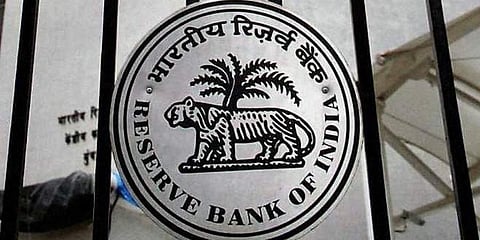

It’s a pandemic year, but unlike other central banks, the Reserve Bank of India (RBI) has been resisting deficit monetisation and aggressive balance sheet expansion. In FY21, its balance sheet grew by a modest Rs 3.5 lakh crore as against an unprecedented Rs 12 lakh crore expansion seen in FY20 (including the peak months of the pandemic’s first wave: March- June, 2020). But the numbers aren’t strictly comparable since the RBI presented a truncated balance sheet of nine months (July 2020-March 2021) aligning its accounts with government finances, which follow a April-March cycle for the fiscal year.
Prior to this, the RBI followed a July-June cycle. Based on RBI’s assets and liabilities published weekly, in absolute terms, the central bank’s balance sheet grew from Rs 53.3 lakh crore as on June, 2020 to Rs 56.8 lakh crore as on March, 2021. The weekly data releases are generally considered accurate, though the final figures will be presented in the annual report to be released shortly.
In percentage terms, the balance sheet stands at 29 per cent of GDP, the highest in recent times, but that’s largely due to the contraction in GDP seen last fiscal year. Like other major central banks that adopted expansionary liquidity policies to fight the pandemic, the RBI too was aggressive initially, mopping up bonds and building forex reserves. But gradually, it settled for conservative expansion building forex assets.
As on March 2021, they stood at Rs 39.3 lakh crore, or 69 per cent of RBI’s total assets. Compared to last year, the net addition is only about Rs 3.7 lakh crore. Forex assets are considered the best way to expand balance sheets, but it could be a strain on currency and are also low-yield, given near-zero global interest rates. Likewise, even though the RBI aggressively bought bonds initially, the total expansion in bond holdings between June 2020 and March 2021 isn’t noticeably excessive at Rs 1.6 lakh crore.
This, despite the waning appetite among bondholders and a rising chorus for direct monetisation (a method where RBI buys bonds from the government directly instead of from financial intermediaries, and prints money). Governor Shaktikanta Das stood his ground, perhaps because direct monetisation expands the balance sheet permanently and comes with its own drawbacks. Instead, he opted for unconventional open market operations, taking a temporary spike in the balance sheet.
To counter the increase in assets (bonds in this case), RBI must increase its liabilites by an equivalent amount by printing money, which partly explains the rise in currency in circulation, which is at an all-time high at roughly Rs 29 lakh crore. This may not be entirely due to Indians’ ‘dash for cash’, because currency withdrawals reduce both banking deposits and statutory CRR balances (which banks deposit with the RBI). But last year, the former grew by 11.5 per cent, while the latter remained unchanged at Rs 5-6 lakh crore.
Any new notes issued must be backed by foreign currency assets or gold, which also partly explains the massive spike in forex assets, both in FY20 and FY21. So here’s the thing. The unusual purchase of bonds directly or indirectly involves money printing, on which RBI earns seigniorage, while it also gets interest on the bonds and securities it holds. Both will eventually be passed on as surplus transfers to the government, which perhaps explains Friday’s unexpected Rs 1 lakh crore dividend bonanza.